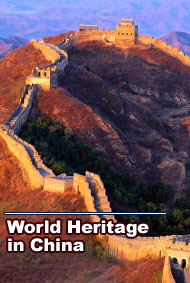
|
|
|
Farmers’ dance of China’s Korean ethnic group
In 2009, Farmers’dance of China’s Korean ethnic group was inscribed on the Representative List of the Intangible Cultural Heritage of Humanity by the UNESCO. Description Gathering in fields or villages during community festivals, members of the Korean ethnic group in Jilin and other provinces in north-eastern China offer a traditional sacrifice to the God of the Land to pay homage to nature and pray for good fortune and a plentiful harvest. This is the beginning of the farmers’ dance of China’s Korean ethnic group, a popular folk practice passed on by senior members of a community to younger generations. Musicians play oboe-like suona, bell-shaped gongs and a variety of drums, while masked or unmasked dancers move farcically to the accompaniment. The dance is inspired by the motions of farming, which it imitates through gestures such as ‘walking the field ridges’. Spreading from its agricultural origins to Korean people of all walks of life in both urban and rural areas, the dance has evolved considerably since it was brought to China at the end of the nineteenth century. For example, the musical ensemble has been expanded to include wind instruments and the dancers’ costumes have been influenced by the clothes of other Chinese ethnic groups. As the product of accumulated labour and wisdom, the farmers’ dance remains an important expression of the cultural heritage of China’s Korean ethnic group. Documents Nomination form: English|French Consent of communities: English Decision 4.COM 13.13 The Committee (…) decides that [this element] satisfies the criteria for inscription on the Representative List, as follows: R1: The Farmers’ dance of China’s Korean ethnic group has been transmitted from generation to generation, reflecting its community’s interactions with nature and history and symbolizing its cultural identity; R2: Inscription of the element on the Representative List would contribute to ensuring visibility of intangible cultural heritage and encouraging cooperation and dialogue between regions and nations; R3: The current, recent and intended efforts to ensure the viability of the element are described, and the will and commitment of the concerned parties to safeguard the element are demonstrated; R4: The nomination was prepared with the free, prior and informed consent of the main bearers of the element; R5: The element is inscribed on the National List of Intangible Cultural Heritage administered by the Department of Intangible Cultural Heritage of the Ministry of Culture. Main Features The Farmer's Dance is a representative dance favored by the Korean ethnic group in northeastern China, and is especially popular in the Korean congregating area of Jilin, Heilongjiang andLiaoning provinces. The Korean farmer's dance originated in ancient times when Koreans began to farm and hold rituals to pray for good harvests and good weather. It was traditionally performed during planting, harvesting and other agricultural events, to help them overcome their fatigue and anguish. Early records mention Korean farmers working to the beat of percussion instruments. |